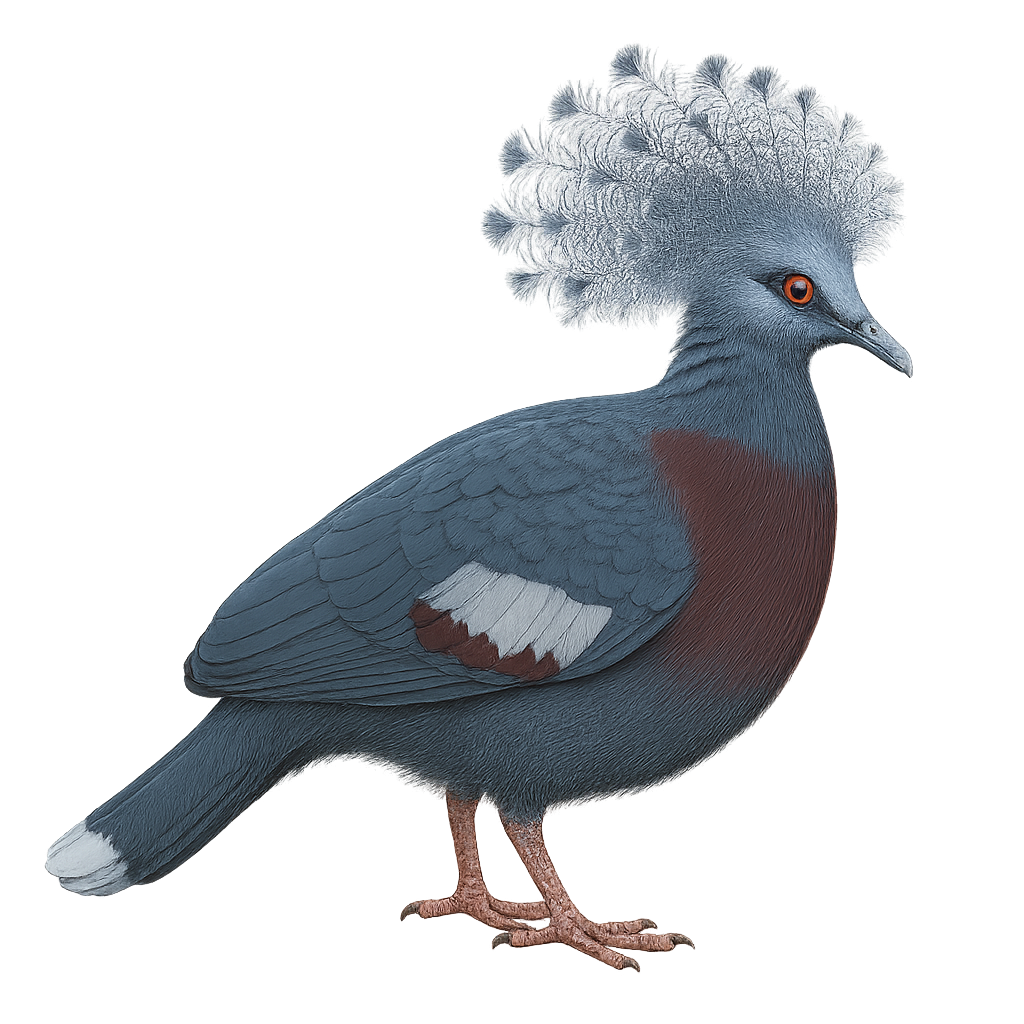Your wildlife photography guide.
Explore the victoria crowned pigeon in detail, study its behavior, prepare your shots.
Where to observe and photograph the victoria crowned pigeon in the wild
Learn where and when to spot the victoria crowned pigeon in the wild, how to identify the species based on distinctive features, and what natural environments it inhabits. The WildlifePhotographer app offers tailored photography tips that reflect the victoria crowned pigeon’s behavior, helping you capture better wildlife images. Explore the full species profile for key information including description, habitat, active periods, and approach techniques.
Victoria crowned pigeon
Scientific name: Goura victoria

IUCN Status: Near Threatened
Family: COLUMBIDAE
Group: Birds
Sensitivity to human approach: Suspicious
Minimum approach distance: 10 m
Courtship display: October to December
Incubation: 28-30 jours
Hatchings: November to January
Habitat:
Tropical rainforests, mangroves, swamps
Activity period :
Primarily active during the day, with peak activity in the morning and late afternoon.
Identification and description:
The Victoria crowned pigeon is a majestic bird, recognizable by its large size and spectacular crest of white and blue feathers. Native to New Guinea, it primarily inhabits tropical rainforests. Its plumage is a striking blue, with purplish hues on the chest and distinctive white markings on the wings. This ground-dwelling bird feeds mainly on fruits, seeds, and insects. Although generally calm, it can emit low sounds to communicate with its peers. The Victoria crowned pigeon is a monogamous species, and pairs share the responsibilities of nesting and raising the young.
Recommended lens:
400 mm – adjust based on distance, desired framing (portrait or habitat), and approach conditions.
Photography tips:
To photograph the Victoria crowned pigeon, it is advisable to use a telephoto lens of at least 400mm to capture the details of its plumage without disturbing it. Approach slowly and maintain a distance of at least 10 meters to avoid startling it. The best photos are often taken early in the morning when the light is soft and the bird is most active. Be patient and wait for it to move into a well-lit area to get sharp and well-exposed images.
The WildlifePhotographer App is coming soon!
Be the first to explore the best nature spots, track rutting seasons, log your observations, and observe more wildlife.
Already 1 429 wildlife lovers subscribed worldwide

